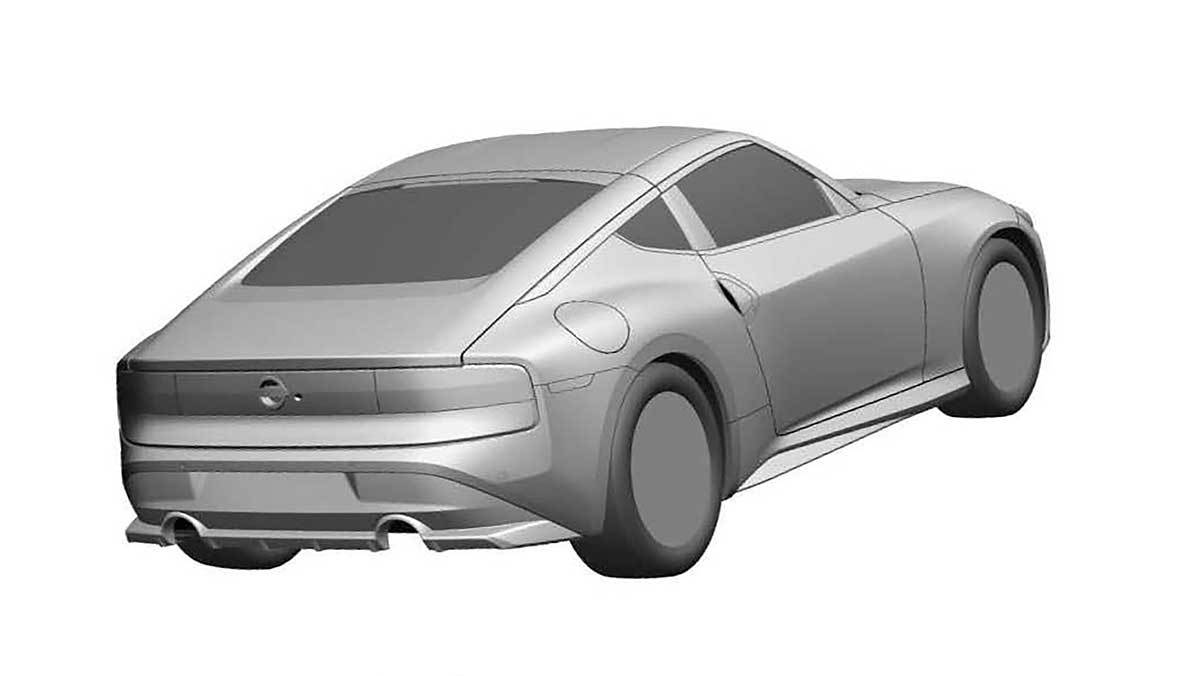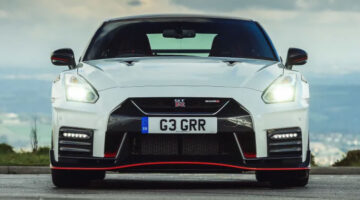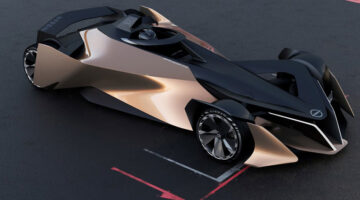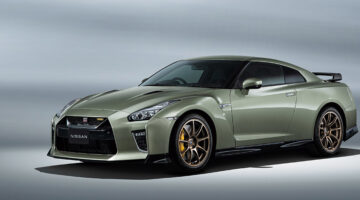We’ve already seen it in concept-form, but these patent renders offer a first look at the model in production spec
Following last year’s reveal of the Nissan Z Proto concept, patent images of the final production car have surfaced online. The new generation sports coupe follows the 370Z some 11 years after its 2009 reveal, but with a rather more serious drivetrain and retro overtones.
Though details of the production powertrain are still to come, the patent renders suggest that the final production car will be near-identical to the concept we’ve already seen. Aside from adjustment of the front splitter, front grille and the addition of a fuel filler cap on the left rear wing, there are no changes to be found – even the door handle design has remained the same.
> Production-spec Nissan GT-R50 by Italdesign revealed
There is a pretty big catch with the new Nissan Z car, however: it’s not coming to Europe. As announced by Nissan Europe last September, ‘The Nissan Z Proto is an homage to Nissan’s sports car heritage, passion and innovation, updated for the modern age. However, a shrinking European sports cars market and specific regulations on emissions mean that Nissan was unable to build a viable business case for the introduction of the production version of the next generation Z-car in Europe. In Europe, Nissan’s priorities remain on its commitment to renew its crossover line-up and accelerate its range electrification strategy.’
The new Nissan Z shares its two-seater two-door configuration with many of its predecessors. At 4382mm long the Z Proto concept is 142mm longer than the 370Z, and almost bang-on the same length as a Toyota Supra. At 1850mm wide and 1310mm tall it is a little narrower and taller than the Toyota, but has a similar tyre footprint on the road with a combination of 255/40 R19 front and 285/35 R19 rear rubber (the same as the Supra at the front, and plus 10mm at the rear).
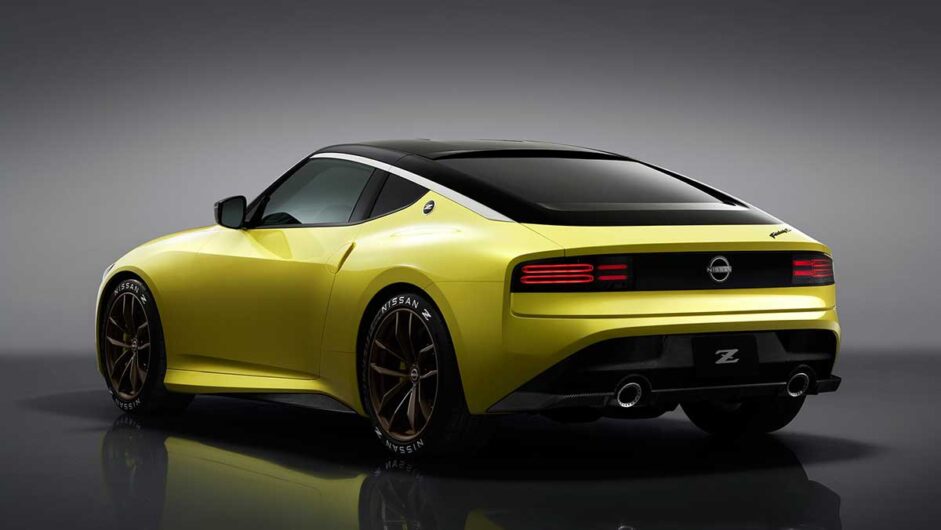
A twin-turbocharged V6 will power the next Z, an engine that we suspect will be a version of the VR30DDTT unit that powers high-specification variants of the Infiniti Q50 and Japanese-market Nissan Skyline. Power figures have not been released, but in those applications the power unit is rated at 394bhp, a figure we suspect won’t be far off that available in the Z. This puts it quite significantly higher than EU-specification Supras, which produce 335bhp from their BMW-derived B58 unit, although in other markets, including Japan and the US, the Toyota is rated at 382bhp, which gives the Nissan a higher figure to aim for.
Another contrast is that Nissan’s next Z will be available with a six-speed manual transmission, rather than being auto-only like the Supra with its eight-speed unit. While the two powertrains sound similar in concept, the combination of a manual transmission and an engine not developed in Europe are likely to be contributing factors in the Z’s inability to pass EU regulations.
Aesthetically, the Nissan Z Proto draws its line of inspiration from two of its most famous predecessors, picking up elements from the original 240Z and the later ’90s 300ZX. The silhouette is pure ’70s Nissan, with a long bonnet, wraparound screen, flat roof and C-pillar motif. The nose is dominated by a single aggressive opening, flanked by two LED headlights that together with their surrounding bodywork mimic the circular headlights of the 240Z.
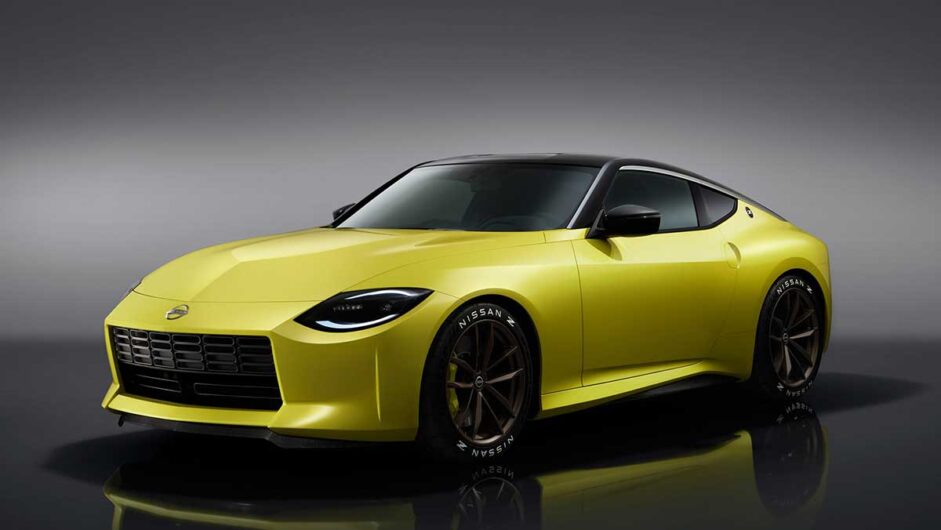
The clean, simple surfacing is another nod to the Zs of yesterday, ending in a tail that includes some references from the 300ZX around the new LED tail lights. The design is squat, compact and traditional in most senses, and lacks the almost caricature expression of a Toyota Supra or Alpine A110. The Nissan’s interior has also been revealed, showing off a simple layout dominated not by digital interfaces – although there are many – but a simple driver-centric graphic that tilts the whole dash towards the driver. As with almost all Zs, three round auxiliary dials are incorporated into the upper dash, while the manual gearlever and handbrake (yes, it has a manual handbrake) sit within a pleasingly restrained centre tunnel.
While it is a shame that the Nissan Z will not be offered in the UK and Europe, it’s important to understand that the market is one that’s very difficult to enter without vast levels of investment. Unfortunately the old-school elements that make the Z Proto feel so refreshing in our modern age of dual-clutch transmissions and hybridised powertrains also make the car nearly impossible to regulate for some markets. It’s also worth remembering that the Nissan-Renault alliance still has a modern, fantastic sports car to take our fancy in the form of the Alpine A110, a car we feel is still a superb example of how good a lightweight, relatively affordable sports car can be when engineered with the right tools and by the right teams.
This article originally appeared at evo.co.uk
Copyright © evo UK, Dennis Publishing

